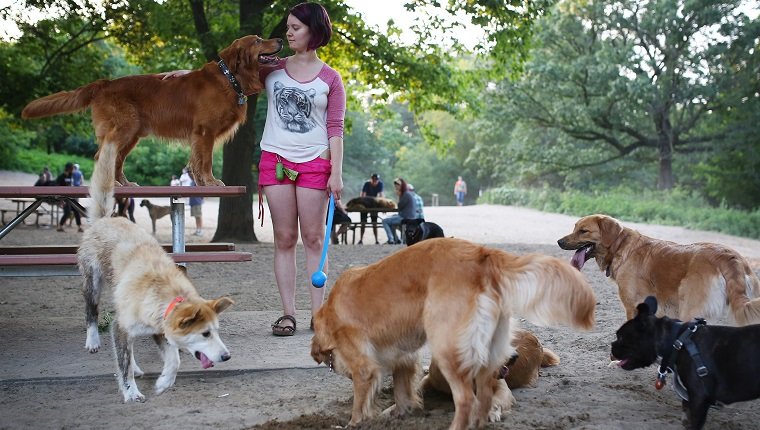Dog flu is an illness caused by viral infection that mostly affects the respiratory system. It’s extremely contagious. The viruses that cause flu in dogs — CIV H3N8 and H3N2 — can spread quickly and easily, and because most dogs have no natural immunity against CIV, almost all exposed dogs become infected.
Canine influenza isn’t always seasonal and cannot be passed to humans, but human flu season is a good time for pet parents to think about protecting their dogs against the virus.
Symptoms of dog flu can be non-existent or mild and disappear on their own within a month, or they can be severe and result in high fever, pneumonia, and serious illness. If you see the signs of canine influenza in your dog, talk to your veterinarian for a proper diagnosis and treatment plan.
Here’s what you should know about the symptoms, causes, and treatments for dog flu.
Symptoms Of Dog Flu

The most common symptom of dog flu is a soft, wet cough that may last three to four weeks.
Other signs include:
- Fever
- Runny nose
- Sneezing
- Fatigue
- Loss of appetite
Like human flu, dog flu can lead to more serious conditions like pneumonia, and although most dogs survive the condition, up to eight percent of dogs who get the flu can die from infection.
Dog flu cannot be diagnosed by symptoms alone. A vet will need to perform blood tests to find out if a dog has the flu.
Recognizing the signs of dog flu is not enough to prevent spreading the disease. In fact, by the time a CIV-infected dog shows signs of illness, the dog is likely to have stopped spreading the virus.
Prior to showing signs of illness, dogs can spread CIV to surrounding objects, which become sources of infection, as well as directly to other dogs.
About 20 percent of infected dogs will show no signs of disease but can still spread CIV to other dogs.
Causes Of Dog Flu

The cause of dog flu symptoms is infection by the CIV H3N8 or H3N2 virus. CIV is spread through direct dog-to-dog contact and through airborne particles released when an infected dog coughs or sneezes. It can also be spread on items in a dog’s environment, such as food bowls or bedding.
The virus can remain active for up to twelve hours on hands and up to 24 hours on clothing.
Because CIV is spread so easily, dogs are at increased risk for catching it if they often visit places like:
- Boarding facilities
- Doggy daycare
- Groomers
- Dog parks
- Group training
Since a flu outbreak can happen anywhere dogs get together, pet care facilities increasingly require flu vaccination for dogs before accepting them. In fact, according to a recent survey, about 25 percent of pet care facilities reported they already have that requirement.
A dog’s risk factors for CIV infection are the same as for Bordetella (also known as kennel cough or canine cough). As a result, more facilities are seeing the wisdom in requiring both flu and Bordetella vaccination.
Veterinary Treatments

The treatment for dog flu is similar to the treatment for influenza in humans. Dogs who suffer from the flu need rest and fluids. They should be provided with a comfortable place to relax with plenty of water while they recover.
If there is a secondary bacterial infection present, veterinarians may prescribe antibiotics. Sometimes vets prescribe cough suppressants to help keep symptoms under control.
Sick dogs should be kept away from other dogs and places where dogs gather such as dog parks and kennels. Reducing exposure to other dogs, especially if you are aware that there is a canine influenza outbreak in your area, can help in preventing the spread of dog flu.
You should always wash your hands after touching other dogs before you touch your own dog or any objects they may interact with.
While these measures may help reduce the risk of your dog catching the flu, a more reliable method is vaccination. Vaccines are available for both strains of canine influenza, but you should ask your vet if these are necessary or recommended.
Has your dog ever had dog flu? How did you treat it? Let us know in the comments below!




